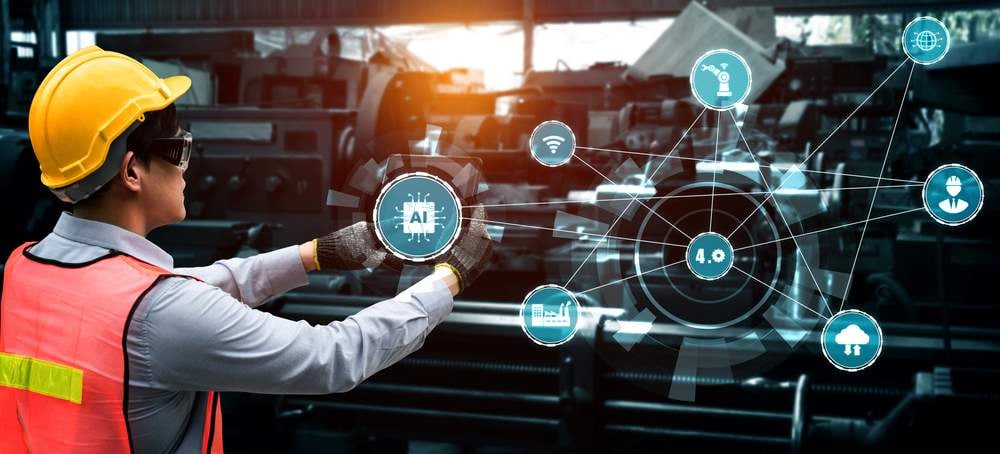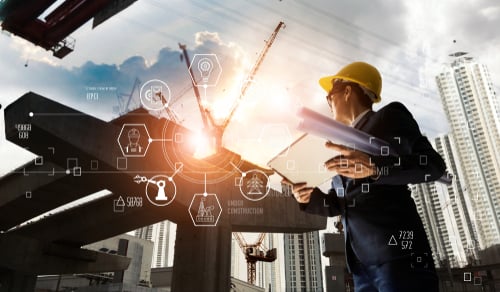Artificial Intelligence (AI) in MEP engineering design

A powerful Mechanical, Electrical, and Plumbing (MEP) design is one of the most important systems of a building as it helps save long-term costs and adhere to the government’s greenhouse gas production limits. A strong MEP design makes sure that there is no conflict between these three individually or together.
Amalgamating AI with MEP is one step forward toward conceptualizing the advanced computational design tools that help fulfill MEP design’s carbon emission goals, sustainability and longevity. The construction sector alone contributes to 39% of the total carbon emission, in which MEP plays a major role
AI in MEP design ensures that millions and billions of potential MEP designs are generated in order to identify the best design amongst them, that caters to the project’s needs and also takes into consideration cost-effectiveness, environment protection, and strategic implementation.
Artificial Intelligence (AI) not only eases a facility’s planning by employing advanced tools, but it also helps lower the project's overall carbon footprint through advanced AI technicality that coordinates and optimizes operational carbon. The average carbon footprint of a typical construction project ranges anywhere between 30 to 80 years, which AI aims to reduce by at least 5% to 10% in the coming years.
How can AI help in making MEP designs environment-friendly?
An efficient building system is one that has an effective MEP design, is affordable, and aims to reduce overall operational carbon. Achieving significant operational carbon levels also mean a reduction in the amount of piping, wiring, controllers, generators, emitters, and various ductwork that goes into MEP layouts. The more complicated an MEP layout is, the more energy is generated, the more the operational carbon and vice versa. Energy efficiency is a constructive solution to reduce at least one-half of the greenhouse gas emissions. When AI optimizes energy efficiency and MEP layouts, it results in a 10-30% reduction in conventional energy usage.
 AI can successfully monitor, collect, control, evaluate and manage energy consumption with respect to mechanical, electrical, and plumbing facilities in all construction areas. The energy is reduced during the peak hours of functioning, problems are identified, and equipment failures are detected well before time through advanced AI tools like AI-driven energy management systems to ensure that no excess loss of energy takes place.
AI can successfully monitor, collect, control, evaluate and manage energy consumption with respect to mechanical, electrical, and plumbing facilities in all construction areas. The energy is reduced during the peak hours of functioning, problems are identified, and equipment failures are detected well before time through advanced AI tools like AI-driven energy management systems to ensure that no excess loss of energy takes place.
AI tools and applications can also be implemented into various industrial, residential, factory-based, and commercial construction units’ energy efficiency strategies. This helps energy-generators forecast energy, store renewable energy, manage energy and employ sustainable development techniques in their existing strategy. It also uses big data to analyze processes that drive the decision-making around what changes need to be made in the MEP design and predict issues only to provide tailor-made solutions for the same.
AI-driven MEP design tools result in lesser embodied carbon along with advanced design strategies that ensure that MEP designers working with AI do not contribute to the MEP systems’ quality and operational costs in the long term. One such useful software is the Building Information Modelling that integrates all project-related details with the project participants to plan, design and construct building structures adhering to standardized MEP designs. Not only does such software manage data but also predicts costs and helps constructors remain under budget, design 3D MEP models, analyze the MEP service, eliminate on-site risks associated with these services and provide an overall better worksite experience with respect to MEP system implementation and maintenance.
Do we really need AI in construction?
The short answer to this is yes. The construction industry is one of the most dangerous areas to work in, especially with the complex MEP systems it installs in the buildings. The high chances of on-site injuries, an average of at least 60,000 deaths every year on construction sites, and MEP design complexities make AI not a requirement but a necessity in construction.
AI helps build safe, efficient and monitored MEP systems with the lowest possibility of failure. It also helps in coordinating the entire MEP workforce to finish projects on time. Furthermore, AI results in enhanced productivity of not only the MEP systems but the workers working on those systems. Including AI in one’s MEP designs maximizes system efficiencies and minimizes costs related to system inefficiencies.
In construction, computer-aided designs, 3D printing, and virtual reality are the most common ways to use AI that are beneficial in standardizing MEP designs to the best quality possible.
Local Law with respect to MEP
The local law as announced by the US judiciary has imposed stringent limits with respect to issuing regulations that help in reducing carbon emissions from the construction industry. The current law states the Environmental Protect Agency’s authority to regulate the greenhouse gas emission is restricted under the Clean Air Act anti-pollution law. New regulations are being formulated for the same under Biden’s administration.
A new target has been set to reduce the greenhouse gas pollution by at least 50% to 52% till 2030. President Biden has also re-joined the Paris Agreement to tackle US’s climate crisis and has claimed to reach a net zero emission by 2050. A Nationally Determined Contribution has been launched that indicates the set processes organized by the National Climate Task force to achieve the new targets till 2030.
US’s Local Law 97 about sustainable buildings states that the city where the construction is taking place must perform an in-depth study about the carbon trading feasibility among different builds in the state to realise the compliance mechanism. This particular law is one of the most robust laws to exist with respect to building emissions legislation as and focuses on green power purchase option, carbon trading, feasible timelines and advisory refinements.
Final Words
AI in MEP is a prerequisite in today’s construction industry as it helps predict specific MEP requirements of the building and reduce greenhouse gas emissions as well. It also decreases hours spent on-site by employees as most of the work is converted to an automated system with lesser costs and higher efficiency. By using AI in MEP designs, the productivity of both the building and the workers can be increased by about 50% itself, and the $10 trillion spent every year on construction activities can be significantly lowered thereby.

Anuj Srivastava
Anuj Srivastava is a principal partner at NY Engineers. He is known for his MEP franchise market knowledge. Anuj is currently leading a team of 100+ MEP/FP engineers and has successfully led over 1500 franchise projects in the US.
Join 15,000+ Fellow Architects and Contractors
Get expert engineering tips straight to your inbox. Subscribe to the NY Engineers Blog below.


